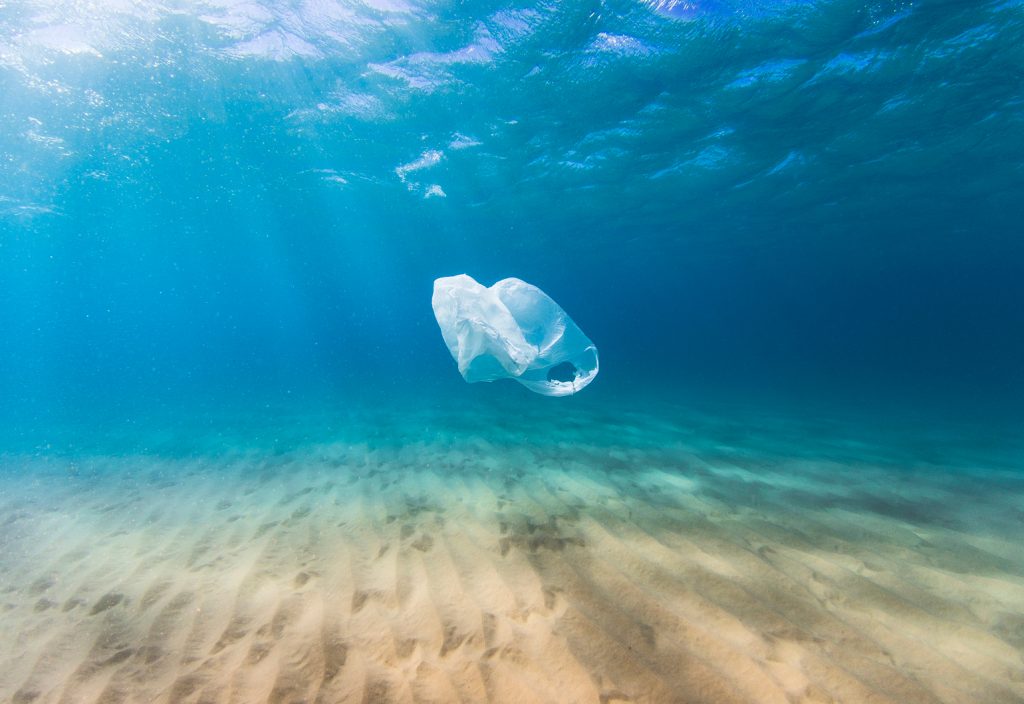According to recent studies, billions of synthetic microfibres are making their way out of laundries and into the sea in spite of wastewater treatment and filtration – and could end up in your next seafood platter.
Awareness of marine plastic and microplastics pollution is on the rise, driven largely by the alarming prospect that by 2050, there might be more plastic in the ocean than fish.
Microplastics between 5 mm and 100 nm in size are particularly nasty, making their way through the food chain after being ingested by sea creatures such as zooplankton, fish and shellfish. And they can bring toxins such as heavy metals and organic pollutants along with them, which can be passed on to people eating the fish.
These microplastics come from a range of sources, including degraded larger plastic waste such as bottles and bags, microbeads from skin cleansing products and microfibres from synthetic clothing such as polar fleeces.
A recent study – which included researchers from Monash University Malaysia – found microplastics including nylon, polystyrene and polyethylene in the flesh and organs of species of mackerel, anchovies, mullets and croakers, which are commonly dried and eaten in Asia.
Another study in Portugal found microplastics in over a third of the fish sampled, with microfibres including rayon and polyester accounting for 96 per cent of the microplastics detected.
Sneaking through wastewater treatment
Scientists have known for almost a decade that plastic microfibres from textiles are a major source of ocean pollution. In 2011 researcher Dr Mark Browne, now a senior research associate at UNSW – found microfibres made up 85 per cent of human generated waste on the world’s beaches.
Speaking to the ABC last year, Browne expressed frustration at the lack of action on tackling marine microfibre pollution.
“Why are we trying to do something about microbeads? Why are we trying to do something about bags? Why are we trying to do something about bottles and not doing something about the most abundant form of material we find in the ocean?” Browne said.
One difficulty is accurately measuring and identifying the amount and type of microfibres that are escaping capture by wastewater treatment plants.
A recent Canadian study, published in Marine Pollution Bulletin, found the Metro Vancouver treatment plant removed up to 99 per cent of microplastics from wastewater collected from 1.3 million people. Of the microplastic collected, 71 per cent were microfibres from fabrics such as polyester and rayon.
The bad news is that around 30 billion particles still found their way through the plant’s filtration systems and into the ocean each year.
The study used newly adapted methods of microplastic collection and analysis, including light microscopy and Fourier Transform Infrared Spectroscopy to overcome technical challenges in obtaining accurate particle counts from wastewater samples.
Water Canada quoted Dr Peter Ross – the study’s principal investigator and vice-president of research at not-for-profit Ocean Wise – as stating Metro Vancouver was the first regional utility in the nation to flag microplastics as an emerging issue in wastewater.
“Having this information is a vital first step in understanding some of the sources of microplastics in the ocean and provides practical guidance as we work together to find and implement solutions,” Ross said.
What’s being done?
Other researchers and utilities are working to understand and resolve this global issue. In Australia, the University of Newcastle is conducting a three-year microplastics study at a wastewater treatment plant in the Hunter Valley, which has received $90,000 in funding from the local water authority and Council.
Browne, along with UNSW Dean of Science Professor Emma Johnston, also received funding of $786,000 in February to conduct research into how best to avoid or catch microfibres from clothing before they reach the sea, including redesigning the products that produce them.
And GHD mechanical engineer Wilson Xu is busy exploring ways sludge degritting equipment, particularly high frequency vibrating screens (HFVS), can be tuned to filter out microplastics.
“As a side effect of implementing something that targets materials that tiny – like grit – you inadvertently remove a lot of other stuff as well, including microbeads,” Xu said.
Businesses are joining the effort to find a solution, too. Seabin, an Australian-designed rubbish bin for the ocean, is prototyping a microfibre filter, and there are several products on the market that can be used in washing machines to catch and properly dispose of microfibres at the source.

